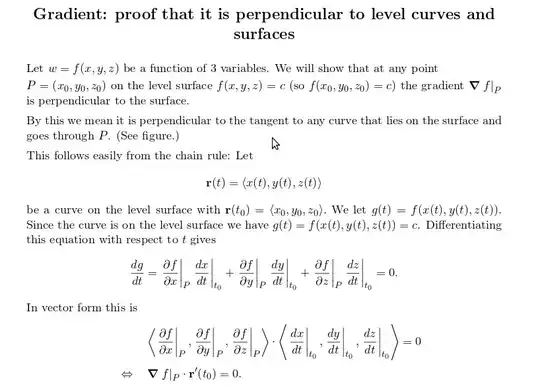I was following some MIT notes and came across this proof
I had a doubt about the existence of $r(t) = \langle x(t), y(t), z(t) \rangle$ a parametrization of a curve on the level surface.
Then I stumbled across this question that dealt with the same issue that seems to be resolved by the implicit function theorem, but I have not yet understood fully.
Does the implicit function theorem allow us to always find a parametrization of a curve passing through a point on the level surface of any given function? Or is it guaranteeing that a tangent to that curve exists?
I have read the statement of the implicit function theorem but I do not see where a parametrization comes into play.
